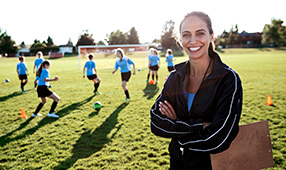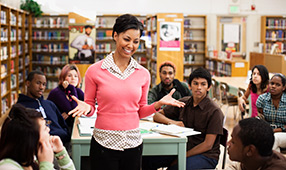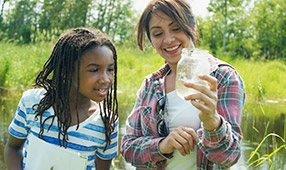Doug Hodum, a high-school science teacher in Farmington, Maine, chairs his department, and one of the teachers on his team often “pushes back” during meetings—airing contrary opinions on things like standards and scheduling.
The two of them will disagree, and the conversation may be tense, but ultimately Hodum knows that he’ll attend the teacher’s annual Christmas party, and the other teacher will attend Hodum’s annual “tri-waffle-thon” (a non-competitive swim/bike/run followed by a hearty breakfast).
“He’s my friend,” Hodum says. “I can have that difficult conversation with him, he can completely disagree with me, but it’s okay. I don’t worry that either our personal or professional relationship will be impacted by it.”
Crystal Brunelle, an elementary teacher/librarian in Onalaska, Wisconsin, echoes the idea that social bonds between educators help improve the work environment in schools. “I think we’re kinder with each other when we know each other well,” she says.
It’s not always easy for educators to maintain social relationships with their colleagues, though. Teachers spend most of their workdays in their classrooms, apart from the other adults in their schools, and their nights and weekends are often filled with extracurricular activities and family responsibilities. Follow these tips to get out of your “silo” and connect with your co-workers.
Lunch in the lounge
When she started teaching, Brunelle was warned to stay away from the “lounge lizards” who populate the teachers’ break room and spend their lunch hour carping about kids. But she says that teachers’ lounges are actually a great place to connect with colleagues outside of formal settings like committee meetings. “My schedule is flexible,” she says. “I try to go in and have lunch at different times, so I’m not always eating with the same people.”
Mix up activities
There’s nothing wrong with the occasional after-work happy hour, but it can quickly turn into an hours-long debriefing session filled with work talk. Instead, consider planning a social event (such as Hodum’s “tri-waffle-thon”) that requires people to interact in a new way.
Brunelle and her colleagues have gone bowling, played cards and competed at “cornhole”—a beanbag tossing game. Last year, the school held its holiday party at a place with video games and laser tag, and teachers have discussed taking a canoeing trip together. “I think we have a lot more fun when we’re doing something besides sitting around a table,” Brunelle says. “Seeing each other in a different place lets us make a different kind of connection.”
Collaborate casually
“A lot of times, teachers isolate themselves,” says Christine Tennyson, Ed.D., a middle-school ESL teacher in Smyrna, Tennessee. “I’m not like that.”
Tennyson doesn’t spend a lot of time with her colleagues outside of school, but she still feels like she has strong social connections with them. That’s because she pops into their classrooms before and after school—and throughout the day—to chat. “Sometimes I’m co-planning” during the brief and informal check-ins, she says. “Sometimes, if child is failing, I go and find out what I can do to help the student. Sometimes it’s just friendly chatter.”
Make gatherings family-friendly
Educators with young kids have a tough time making it to after-school events, but summer and weekend get-togethers like backyard barbecues allow everyone to participate. Meghan Everette, an elementary teacher in Daphne, Alabama, used to work at a school where a group of teachers all had children around the same age. “Over the summer, we would get together for play dates,” she says.
A bonus: The presence of spouses helps to limit work talk and keep things social. “My husband definitely will say, ‘Okay, enough teacher talk,’” Everette says.
Connect digitally
While it’s important to maintain good relationships with your direct co-workers, you may find that you’re craving conversations with other teachers—for example, if you work at a small school with no other teachers in your content area, or if your colleagues don’t share your interest in pedagogical literature.
The advent of social media means that you can establish friendships with teachers all over the world. Educators can meet through online platforms (or in-person at conferences and through professional organizations) and then stay in touch via social media, email, text messaging, or video conferencing.
Everette is part of a small group of teachers from around the country that communicates daily. “We talk about what goes on in our school. We also talk about things that are going on in our lives, like where we went to eat or this bookstore that you have to try,” she says. “It’s both personal and professional, which is really nice.”












